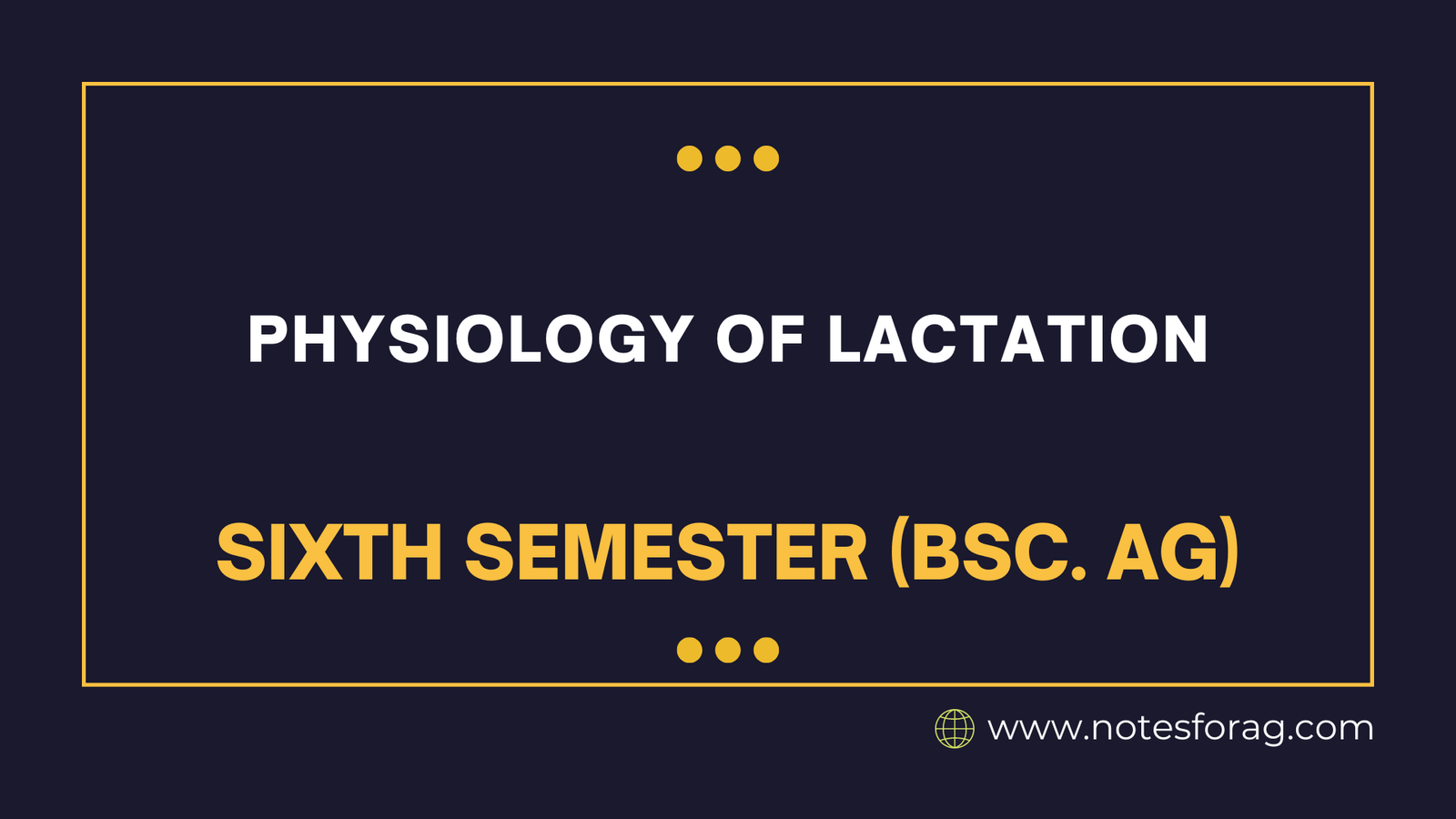Lactation is the biological process by which mammals’ mammary glands produce and secrete milk to nurture their young. It is a complicated physiological function influenced by hormones, genetics, and environmental factors. This process starts throughout pregnancy with the development of the mammary glands and continues after birth with milk production and secretion.
Table of Contents
Mammary Glands
The mammary glands are specialized organs responsible for the production, storage, and secretion of milk. In mammals, they consist of several important structures that work together during lactation:
- Alveoli:
- The fundamental milk-producing units in the mammary gland.
- These small, grape-like clusters are lined by secretory epithelial cells that synthesize milk components (proteins, fats, and lactose) and secrete them into the alveolar lumen.
- Myoepithelial Cells:
- Surround the alveoli and contract in response to the hormone oxytocin, helping to expel milk from the alveoli into the ducts.
- Ductal System:
- Milk produced in the alveoli flows through the network of ducts, which converge into larger ducts leading to the nipple or teat.
- Lobules and Lobes:
- The alveoli are organized into clusters called lobules, and several lobules form larger units called lobes.
- Each lobe drains into a major duct that ultimately exits through the nipple.
- Blood Supply:
- Adequate blood flow to the mammary glands is essential, as it provides the raw materials for milk synthesis (nutrients, hormones, water).
Stages of Mammary Gland Development
Mammary gland development occurs in distinct stages:
- Fetal Development:
- Basic structures of the mammary gland begin to form during fetal life, although they remain undeveloped until puberty.
- Puberty:
- At puberty, the mammary glands undergo significant growth and development under the influence of hormones like estrogen and progesterone.
- Ductal branching and alveolar growth occur during each menstrual cycle.
- Pregnancy:
- During pregnancy, the mammary glands undergo extensive development to prepare for lactation. The glands enlarge, and alveolar cells proliferate, forming the functional units that produce milk.
- Lactogenesis:
- Lactogenesis is the initiation of milk production. It occurs in two stages:
- Lactogenesis I: Begins mid-pregnancy and is marked by the differentiation of alveolar cells and the synthesis of colostrum (a high-protein, antibody-rich milk produced just after birth).
- Lactogenesis II: Begins after delivery, with the onset of copious milk production triggered by hormonal changes following the expulsion of the placenta.
- Lactogenesis is the initiation of milk production. It occurs in two stages:
- Involution:
- After weaning, the mammary glands return to a non-lactating state, a process known as involution.
Hormones Involved in Mammary Gland Development and Lactation
The development of the udder and the process of lactation are primarily controlled by a complex interplay of hormones, including:
- Estrogen:
- Plays a critical role in the development of the mammary ducts during puberty and pregnancy.
- Stimulates the growth and branching of the ductal system and increases the vascularization of the mammary glands.
- Progesterone:
- Essential for alveolar development during pregnancy.
- Works synergistically with estrogen to prepare the mammary glands for milk production.
- Inhibits the initiation of lactation during pregnancy by preventing the action of prolactin on milk synthesis.
- Prolactin:
- Secreted by the anterior pituitary gland, prolactin is the principal hormone responsible for initiating and maintaining milk production (lactogenesis).
- Prolactin levels increase during pregnancy, but its full effect is blocked by high levels of progesterone.
- After birth, the drop in progesterone and estrogen allows prolactin to stimulate milk synthesis in the alveolar cells.
- Oxytocin:
- Produced by the hypothalamus and released from the posterior pituitary gland, oxytocin triggers the milk ejection reflex or “let-down reflex.”
- Oxytocin causes the myoepithelial cells surrounding the alveoli to contract, expelling milk into the ducts.
- It is released in response to suckling or external stimuli (e.g., a baby’s cry).
- Human Placental Lactogen (hPL):
- Produced by the placenta during pregnancy, hPL promotes the growth and differentiation of the mammary gland and modulates maternal metabolism to support milk production.
- Cortisol:
- A glucocorticoid hormone that enhances the action of prolactin and supports the growth and differentiation of alveolar cells.
- Insulin and Growth Hormone:
- These metabolic hormones play supportive roles in mammary gland development by providing energy and raw materials necessary for milk synthesis.
- Growth hormone in particular enhances the effects of prolactin and facilitates mammary gland growth.
- Thyroid Hormones:
- Thyroid hormones are important for the overall metabolism of the mammary gland and support milk synthesis by regulating cellular energy use.
Lactation Process
Once lactation is established, the cycle of milk production and ejection continues as long as the infant regularly suckles, which maintains prolactin levels and stimulates oxytocin release. Over time, milk production adjusts to the infant’s needs based on the demand-and-supply feedback loop.
When the stimulus (suckling) is reduced or removed (weaning), prolactin secretion decreases, and the mammary gland undergoes involution, returning to a non-lactating state.
In summary, the development of the udder and the process of lactation depend on a finely-tuned hormonal interplay, with key players such as estrogen, progesterone, prolactin, and oxytocin orchestrating the preparation and maintenance of milk production.
Frequently Asked Questions (FAQs)
What are the 3 stages of lactation?
Breast milk has three different and distinct stages: colostrum, transitional milk, and mature milk.
What is the physiology of the puerperium and lactation?
These changes primarily include the return of the maternal organs to around pre-pregnant sizes and functions, endocrine changes as the placenta is lost, and the onset of lactation.
Related Articles

